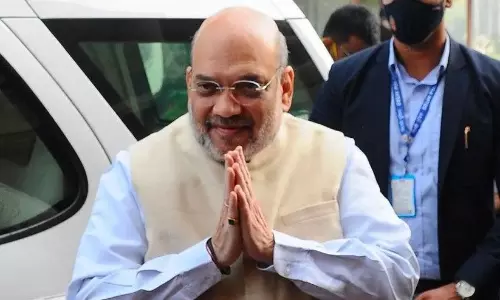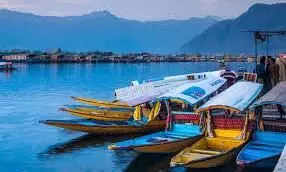
Kashmir on track for record-breaking tourism in 2024
text_fieldsKashmir is witnessing an unprecedented surge in tourism this year, with over 1.25 million visitors having already flocked to the region in 2024.
This impressive influx of tourists suggests that the year might surpass all previous records, according to local tourism department officials.
The bustling tourist spots such as Srinagar city, the ski resort of Gulmarg, and the hill stations of Pahalgam and Sonamarg are experiencing full occupancy. Hotels, guest houses, homestays, and houseboats on Dal and Nigeen Lakes are booked solid until mid-June. An official emphasized that this high demand extends across all types of accommodations.
Adding to the optimism is the marked increase in foreign tourists, attracted by the region’s improved law and order situation and prevailing peace. These international visitors contribute significantly to the local economy, not only through foreign exchange but also due to their higher spending compared to domestic tourists. The region's few five-star hotels, currently fully booked, are hosting a mix of high-end domestic and international guests.
Interestingly, despite the start of the annual Amarnath Yatra on June 29, which typically reduces general tourist numbers due to the influx of pilgrims, this year’s tourist bookings indicate that the overall flow will remain strong. The Yatra concludes on August 19 after 52 days.
Hoteliers attribute this sustained interest partly to the soaring temperatures across the rest of India, which drives tourists to the cooler climes of Kashmir. A local tour operator with over forty years in the business noted that while other hill stations like Shimla, Darjeeling, and Nainital are popular, they do not match Kashmir’s capacity to accommodate tourists.
Currently, the majority of visitors are from Gujarat, Tamil Nadu, West Bengal, and Maharashtra, with expectations of increased arrivals from Delhi and Punjab by mid-June.
Tourism stands as the second largest industry in Kashmir after horticulture. While horticulture generates approximately ₹10,000 crore annually, tourism contributes around ₹8,000 crore to the local economy. Unlike horticulture, which primarily benefits orchard owners, tourism supports a broad spectrum of the population including hoteliers, houseboat owners, Shikarawallahs, taxi operators, pony wallahs, tourist guides, and artisans specializing in shawls, carpets, wood carving, and papier-mâché crafts.























